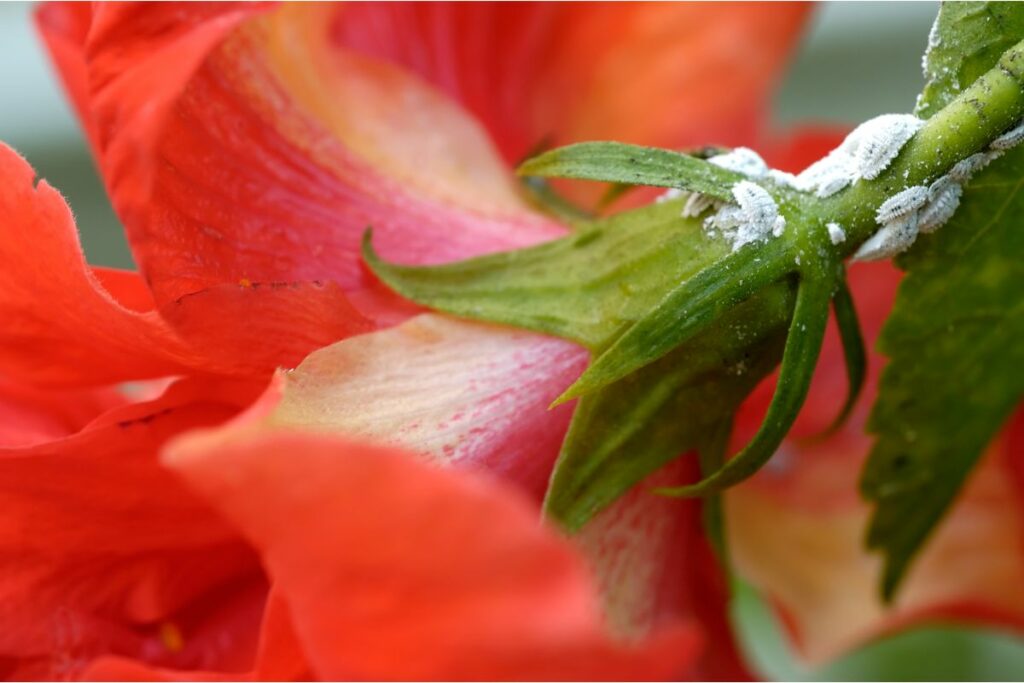Disclaimer: Our editors have used AI to create or enhance parts of this article and some images. All content has been fact-checked by our team to ensure accuracy.
Transforming your everyday environment into a tropical oasis offers an escape without ever leaving your property. Cultivating tropical plants in your backyard infuses the space with vibrant hues and lush greenery, setting the scene for leisurely days under the sun with a refreshing drink in hand.
Among these plants, the fiesta hibiscus stands out with its striking blooms that capture the essence of summer warmth. The flowers exhibit a captivating progression of colors, starting with a vivid orange that transitions to golden edges and culminates in a deep pink or red center. This versatile plant thrives both indoors and outdoors, provided it receives proper care. The forthcoming content will guide you through its ideal cultivation practices and share advice on revitalizing a distressed hibiscus.
Caring for Your Fiesta Hibiscus

Optimal Lighting Conditions
Fiesta Hibiscus thrives under bright light. Ensure it gets daily exposure to direct sunlight for 6 hours in warmer climates. For colder regions, increase sunlight exposure to promote blooming. Indoors, position your plant by a window that basks in a few hours of direct sunlight each day.
Watering and Moisture Levels
Your Fiesta Hibiscus will need regular watering—sometimes daily under dry conditions. For outdoor plants, aim for thrice-weekly watering, while potted plants may require watering 1 to 3 times per week. Before watering, check the soil’s moisture; if damp, postpone watering for another day or two. During winter, reduce watering frequency but maintain soil moisture for root insulation.
For humidity, aim for 40-50% or higher. Indoor plants may benefit from a humidifier to maintain these levels.
Ideal Temperature Ranges
Fiesta Hibiscus enjoys temperatures between 50 to 90°F. Guard against temperatures below 40°F to prevent frost damage. Provide protection by mulching or using a snow cover for outdoor plants. A sheltered but unheated indoor space, like a garage, can shield your plant during chilly weather.
Appropriate Soil and Nutrition
Your plant will flourish in fertile, well-draining loamy soil. For container planting, mix regular potting soil with perlite or pumice for improved drainage. Supplement with earthworm castings for enhanced fertility if desired. Raised beds can also optimize drainage and soil quality.
Fertilization should be concentrated in the spring and summer months with a bloom-booster or a balanced fertilizer regimen. Cease fertilizing as the plant enters dormancy.
Guidelines for Repotting
Repot your Fiesta Hibiscus every 1-2 years, choosing a container only 1-2 inches larger to avoid excessive moisture retention. Opt for light-colored terracotta pots with drainage holes. Water the plant immediately after repotting. If roots are tightly bound, gently loosen them during repotting.
Trimming for Health and Aesthetics
Regular pruning is key to shaping your hibiscus and promoting new growth. Conduct heavy pruning at the end of winter or early spring. For a well-maintained shape, consider removing up to half of the plant’s growth. This encourages branching for a fuller shape. Customize the plant form to your desired aesthetic, such as a block, circle, or tree silhouette.
Propagating New Plants
Stem cuttings offer an effective propagation method for Fiesta Hibiscus. Water propagation is straightforward, although soil-based propagation is an alternative.
By applying these care strategies, your Fiesta Hibiscus can become a vibrant and healthy addition to your garden or home.
Troubleshooting Fiesta Hibiscus Health Concerns

Troublesome Insects
Your Fiesta Hibiscus may attract several types of insects. These include mealybugs, aphids, thrips, and particularly spider mites. Address these invaders with neem oil or insecticidal soap treatments, which are effective in eliminating them. For prevention, ensure the plant isn’t overwatered, place it in an area with ample sunlight, and be cautious not to apply too much fertilizer.
- Mealybugs/Aphids/Thrips/Spider Mites: Treat with neem oil or insecticidal soaps.
- Preventative Measures:
- Avoid Overwatering
- Ensure Adequate Sunlight
- Moderate Fertilization
Common Plant Ailments
Your Fiesta Hibiscus may fall prey to diseases, with root rot being a prevalent issue. This is typically due to excessive moisture at the roots. Yellow leaves and stunted growth are indicators of this condition. Inspect the plant’s roots, discarding any that are darker and soft. Replicate the plant in new soil and a sanitized container, taking care not to water for a couple of days post-replanting. Resume watering when the plant shows slight wilting.
- Root Rot Symptoms:
- Yellowing leaves
- Declining foliage
- Reduced growth
- Treatment Steps:
- Remove affected roots
- Use fresh soil
- Clean planting container
- Delay initial watering after repotting
Concluding Observations
Cited Works
Light and Water Needs: The fiesta hibiscus thrives in environments that provide substantial light and ample hydration.
Soil and Fertilizer Preferences: Fertile, well-draining soil accompanied by bloom-enhancing nutrients contributes to the plant’s vigorous flowering.
Growth and Maintenance: Regular repotting and pruning are essential for the fiesta hibiscus due to its rapid growth.
Health Maintenance: Strategies for pest and disease prevention ensure the ongoing health of the plant.
Maintenance Table
| Action | Purpose |
|---|---|
| Repotting | Accommodate growth |
| Pruning | Shape plant and remove deadwood |
| Light | Full exposure |
| Watering | Keep soil moist, not waterlogged |
| Fertilizing | Promote blooms |
Pest and Disease Prevention Tips
- Inspect regularly
- Maintain proper moisture
- Clean away debris
- Use appropriate treatments only when needed
Remember: Regular care rewards you with vibrant blooms.